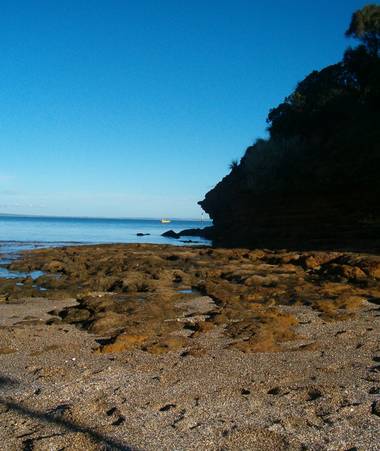I hope you find my writing and business tips and observations useful. My business and blog are dedicated to helping businesses communicate clearly and reach their potential.
Read, subscribe to my newsletter, enjoy!Tash
Factoring in the carbon tax
The biggest carbon tax cost impact for most Australian businesses will relate to increased utility costs – power and gas in particular. And the flow on of suppliers having to cover their increased utility bills.
Energy Action has an online calculator to help you estimate the impact on your business – just enter your current electricity and gas bills to get an estimate of your bills for the next 3 financial years.
The carbon tax is coming, power bills will increase and businesses have to deal with it.
In the fight to keep prices down but profits steady, I think adding green practices to your business can help. That is, if you can implement some changes that reduce your power bills, the carbon tax will have less impact on for expenses so you can maintain prices and profits.
As a test, I reduced my electricity consumption by 50 kWh to save $16.93 per month in 2013 and $18.71 per month in 2015. Prices jumped $3.55 per month in that period prior to my reduced consumption.
{I made up the consumption numbers just for interest and used Victoria as my state.}
Saving in business power
How can you reduce your power consumption by 50 or more kWh?
There are many ways to cut your energy consumption, but some I have done or am looking at include:
- switch to energy saving globes
- turn off lights, printers, copiers, monitors, etc at the end of every business day – and over lunchtime if everyone is out of the office
- put on a jumper and turn down the heating
- dress in cool clothes, use a fan and ensure circulation in the office so you can use the air conditioning less in summer
- keep your equipment clean – dust in fans and filters can slow things down, risk overheating and therefore cost more to run
- rearrange furniture to maximise natural light from windows to reduce the need for electric lighting
- where possible, reduce the amount of sun hitting your windows in summer – plant deciduous trees outside or put up some shade cloth
- only print what is necessary – many things can be read on your screen and stored on your hard drive. Saves in paper and ink costs, too
- use kitchen appliances wisely – only add enough water in the kettle as needed but fill the dishwasher completely before use
- where relevant and practical, encourage staff and clients to use manual doors rather than electronic doors and stairs rather than lifts – it’s healthier for them as well as saving electricity use
What other ways can you minimise the impact of the carbon tax on your business? Will you try to minimise the impact rather than pass on increases to clients?
Carbon pricing your business

The carbon tax should be protecting beautiful places like this (Ricketts Point in bayside Melbourne)
Have you thought about how the Carbon tax will impact your business and pricing structure yet? Will you update your web content to mention carbon pricing?
Now that the lower house has passed the carbon tax legislation, we know it’s likely to be in place next July and have some idea about what is involved. For instance, next financial year carbon will be taxed at $23 per tonne and we’ve been told to expect a 0.7% increase in living costs (although some or all of this may be covered with tax cuts and increased Government payments). The price would change the following year, and beyond.
Carbon tax for small business
Small businesses won’t have to directly pay a carbon price like the big 500 corporates, but that doesn’t mean we are unaffected. At the minimum we will face increased power costs and (as I understand it) small businesses are not getting anything in the compensation packages.
How will this impact on your business? Can you absorb the increases or will you need to update your prices?
Personally it will be increased power costs that will affect my business, along with (potentially) higher supplier costs. Only I have no idea what ‘$23 a tonne of carbon’ means for my electricity bill.
For a business delivering goods, buying materials for manufacture or providing mobile services, the impact could really add up.
Capping price increases
As individuals, it is good to know that the ACCC will be watching for price increases above 0.7% (where labelled due to carbon tax) so we aren’t ripped off. As business owners, it’s tough – will our cost increases be less than 0.7%? can the business afford to pay the owner(s) more to help with higher living costs? can I increase my prices and increase additional costs (e.g. delivery) by 0.7% each and be operating legally?
It sounds simple – use a lot of carbon, produce a lot of greenhouse emissions, and pay for it. Implementing it into real business practices is going to be harder.
So what are your thoughts about small business pricing next year? Any idea how your business will deal with it?
PS You can learn more about carbon pricing, it’s value and climate change through COs Australia’s You Tube channel.

Recent Comments